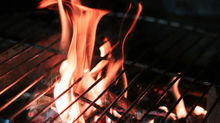Braciola is Italian Comfort Food for the Dog Days of Winter
- Arlene Coco
- Mar 13, 2022
- 3 min read
Updated: Mar 23, 2022
Braciola sometimes pronounced [brah-chee-OH-lah] is the Italian name for meat roulade.
Food Historians confirm meats rolled around stuffings of various sorts were enjoyed in medieval times. Although the origins of this famous Italian dish are vague, legend has it that the Sicilians were the original resourceful cooks that came up with the idea of pounding meat and rolling it with breadcrumbs and other local items stretched out to feed many more people than the meat alone could. Smothered in a red sauce with a little wine, this makes the dish go farther for those few extra guests.

There have been other names for the same dish in other parts of Italy so the battle still goes on about who was first. The book, Pomp and Sustenance: Twenty-Five Centuries of Sicilian Food by Mary Taylor Simeti states “Among the names of the same dish are Farsumagru which means “False lean,” a braised beef or veal roll filled with hard-boiled eggs, salami, and cheese from Sicily. It originated in Palermo, and its name refers to the lean meat that covers a rich interior.” Still today, Braciola is treasured in Italy’s home cooking repertoire. Mostly prepared in the home, there are as many cooks as there are recipes for Braciola. Cousin to the famous meatball, it is served hot in the winter or cold in the sweltering summer heat.
Italians are famous for comfort food. In fact, some say that the whole recipe lineup is comfort food. In a country that holds strong to its culture and history, the recipes stand the test of time. My old editor, Ginny Bivonia a real Sicilian, recalls the way her favorite was first served: the meat sliced with the salad as one course and then, served the sauce sparingly on the pasta saying “Remember- it's not about the sauce, it’s about the pasta” meaning do not overdo the sauce, only enough to coat the noodles.”
Essential ingredients
Flank steak, top round steak, and other frugal cuts of meat are used for this dish depending on the region. Some common fillings are parmesan cheese, chopped eggs, garlic, bread crumbs, prosciutto or bacon, parsley, basil. A purist’s recipe of Braciola presented in its glory is stuffed with lots of garlic, herbs, crumbs, and Parmesan cheese. The shirttail cousins that make appearances are chopped eggs, peppers, onions, and carrots. It appears to have interchangeable ingredients, which is a prerequisite of a recipe that stands the test of time decade after decade.
The next time you want to broaden your culinary horizons, try your hand at a Braciola.
One bite says it all, the tender, sophisticated flavors melded together to create the perfect dish for a cold winter night. Served with a side of pasta or risotto, add a salad and you have a complete meal for friends that they will think you spent days cooking.

Braciola
This recipe hails from my cookbook editor and good friend who is an expert in Italian cooking. She shared this recipe with me; it’s from her family collection of recipes.
Ingredients:
1 pound Flank steak, butterflied and each half cut in two and pounded to make them somewhat thin.
This recipe makes 4 Braciola which will serve 4-6 people
4 Tablespoons coarsely minced fresh garlic
4 Tablespoons coarsely minced fresh parsley
1 cup Sweet sticky Muscat raisins (or regular raisins soaked in 1 cup of Port wine overnight, and smashed out thin)
Lawry's seasoned pepper to taste
Lawry's garlic salt to taste
2 Tablespoons Extra virgin olive oil
2-3 cups Red Gravy (prepared Marinara Sauce)
Instructions:
Spread the garlic and parsley generously on the pieces, dot (about every inch or so) with raisins, and sprinkle lots of pepper and some garlic salt on each piece. Roll and tie with string. In a large skillet over medium heat, brown all over in olive oil and drop in the prepared sauce.
My Father's sauce was sweet, with oregano, basil, and of course, garlic. Simmer for about 4 hours until the braciole are very tender. Serve with rigatoni or other sturdy pasta. The finished product should be peppery, garlicky, and sweet from the raisins. I really do think that there was some Turkish influence because of the raisins....but who knows. My kids love it! So do I.
And what else matters?







































Comments